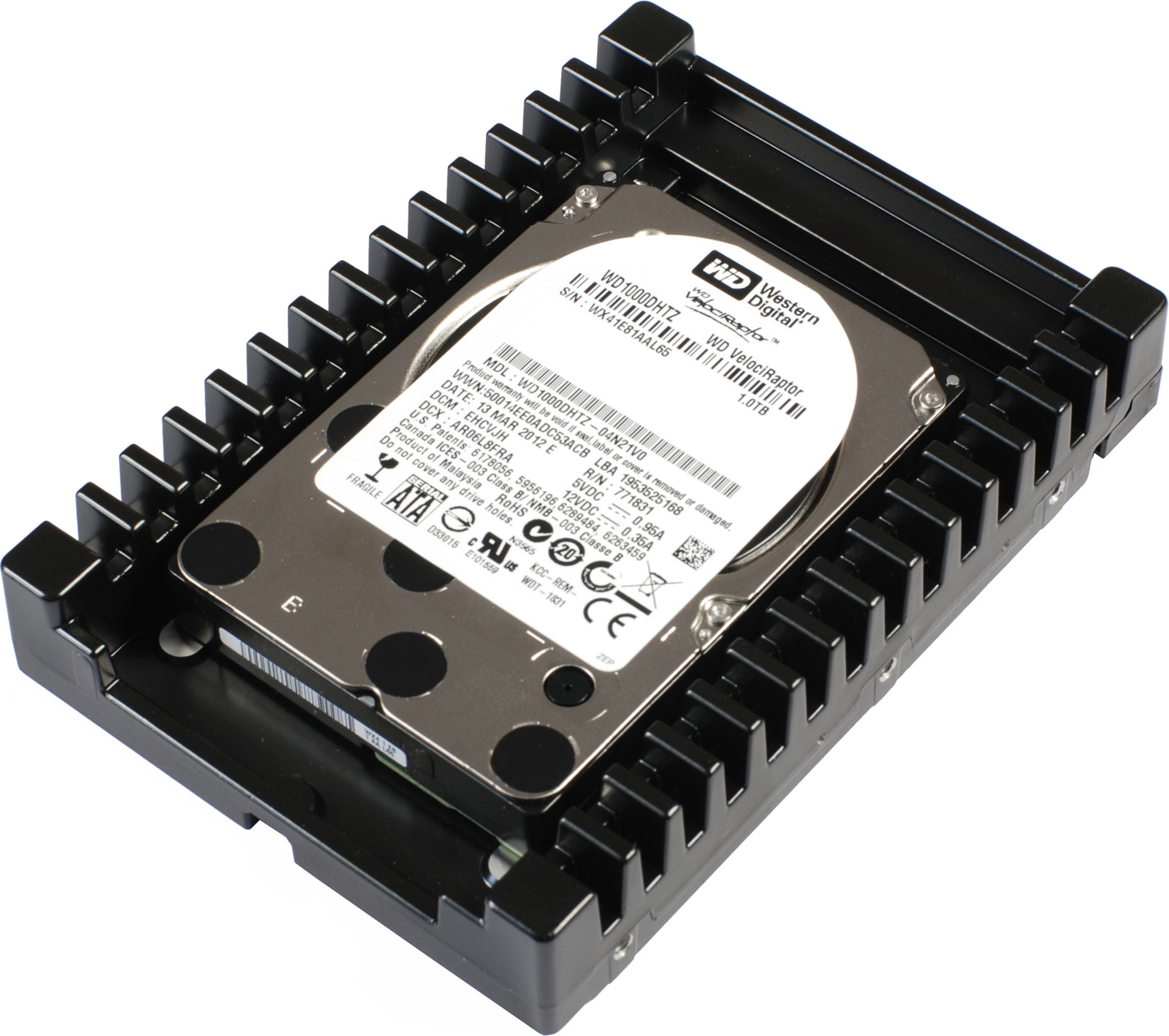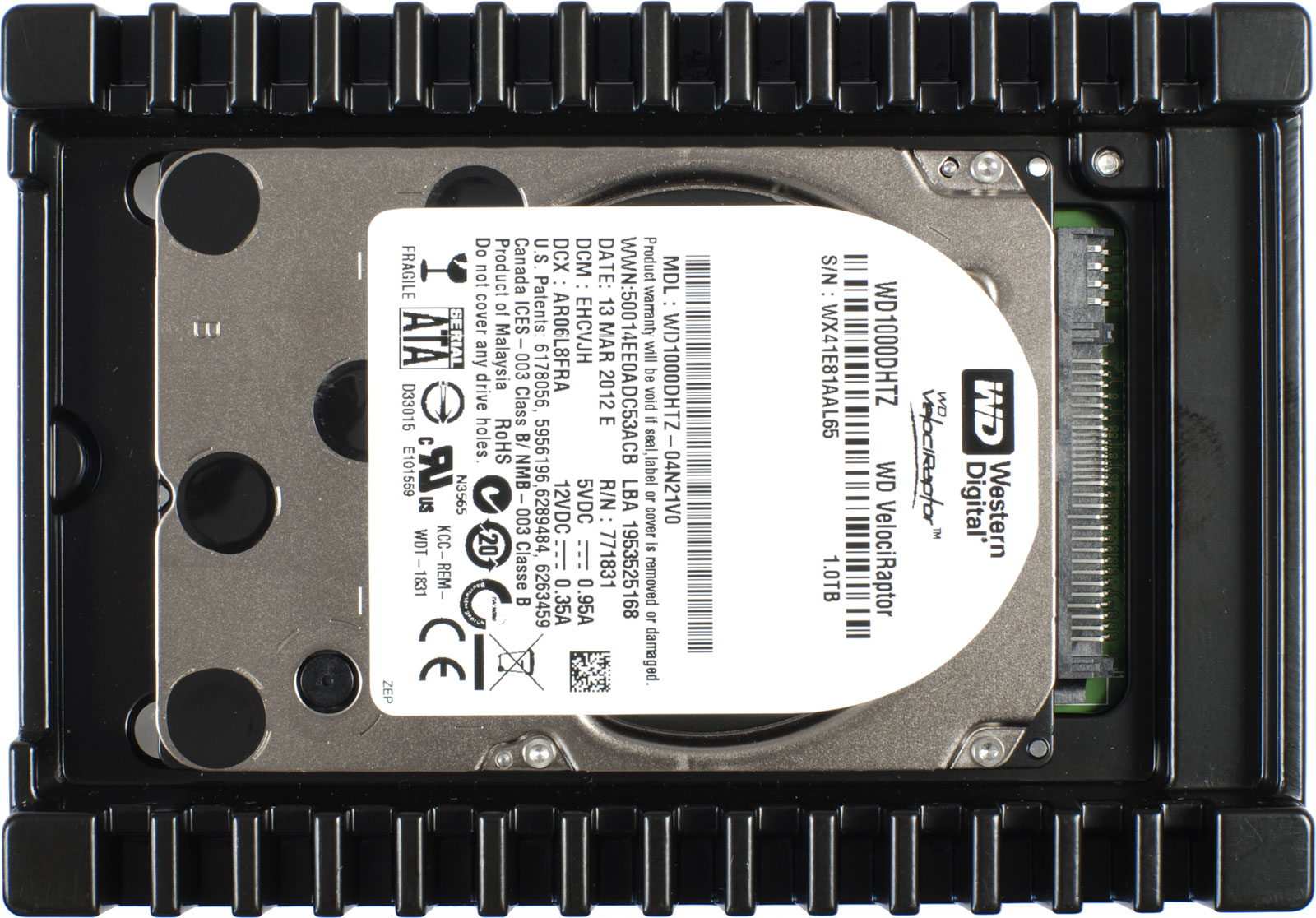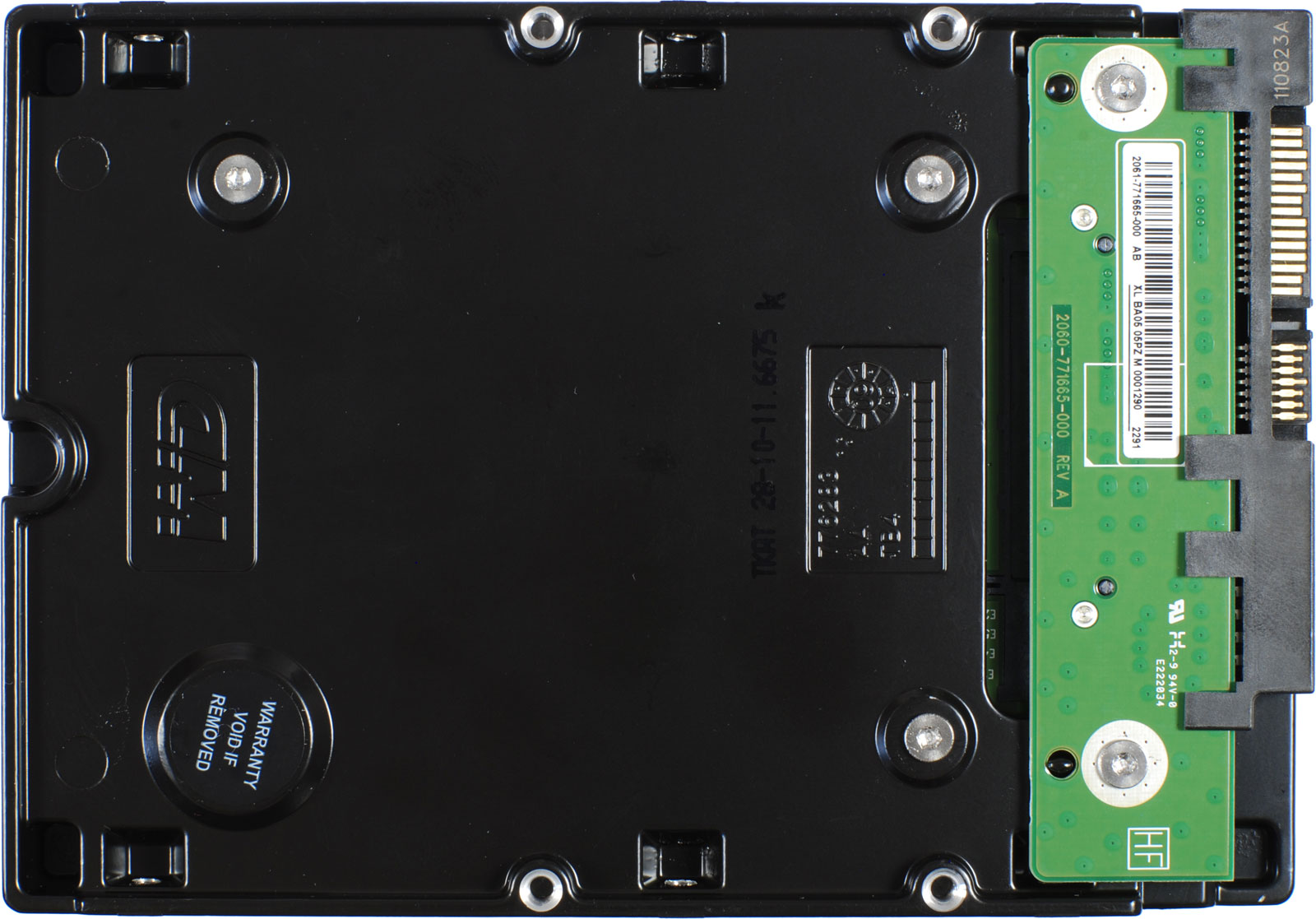Western Digital VelociRaptor WD1000DHTZ Review
Western Digital recently sent us its latest-generation VelociRaptor, a 1 TB update to what was already the fastest 3.5" disk drive available. Once again, it stymies the mechanical competition with significantly higher performance.
The VelociRaptor WD1000DHTZ (1 TB)
After ten years of Raptor/VelociRaptor legacy, the WD1000DHTZ is Western Digital's first model that doesn’t outright double the previous flagship's capacity. Judging from the fact that the 36 GB progenitor was followed by a 73 GB model, then 150 GB, 300 GB, and 600 GB models, we would have hoped for 1.2 TB. But we're cool with an even 1 TB. Those 200 GB won't make or break this drive's commercial success.
Where does the company see this particular product excelling? Well, it dubs the new VelociRaptor a “Workstation Hard Drive.” Combining high performance and high reliability, the disk should be well-suited for applications like professional office machines, rendering boxes, high-end video and picture editing, small servers, and enthusiast-oriented desktops in need of a fast hard disk. The VelociRaptors that came before performed the same role, bridging a gap between regular 3.5” hard disks and then-current 3 Gb/s SSDs.
Apart from the 1 TB flagship model, Western Digital also offers the new VelociRaptor in capacities of 250 GB (WD2500HHTZ) and 500 GB (WD5000HHTZ). At the time of writing, the 1 TB model is selling for $300, while its two lower capacity siblings sold for $150 and $210, respectively. Apart from their capacities, all three models share the same mechanical and physical specs. You get a spindle speed of 10 000 RPM, a 6 Gb/s SATA interface, 64 MB of cache, and Advanced Format compatibility. The disks are specified for 600 000 load/unload cycles, and offer five-year warranties. The massive metal frame encircling the VelociRaptor helps dissipate heat. It's so effective, in fact, that we only measured 35-degree Celsius temperatures.
Sequential throughput of more than 200 MB/s makes the WD1000DHTZ the fastest SATA disk we have ever tested. It steals the performance crown from its predecessor (WD6000HLHX), which now ranks second. The new drive also tops the application performance chart, surpassing each and every other mechanical disk, including that same previous-generation model.
We measured the minimum sequential write performance of the new VelociRaptor at 114 MB/s, which can be an absolutely critical number in applications that rely on fast write performance, like digital recording of multiple high-definition video streams. Certain SSDs can't even get that high (keeping in mind, of course, that the read rate of most SSDs is much higher than the read rate of the VelociRaptor). Its high spindle speed of 10 000 RPM and low random seek time of 6.8 ms (for reads) ensure the top spot on the charts, even as its seek time for writes, 8.8 ms, is slightly higher than the corresponding value of some older VelociRaptor disks and even one Raptor drive, as well as a few competing models.
Even as Western Digital manages to increase performance, the new VelociRaptor's power consumption is actually lower. We measured 4.0 W at idle, which is impressive for a 3.5” disk, and 5.5 W during write operations. The latter value earns the VelociRaptor yet another top score on a chart. During a workstation benchmark, the disk drew a modest 6.4 W. Not surprisingly, then, the new drive also wins the top spot on our performance per watt charts. Its only blemish, if we can call it that, seems to be comparatively loud seek operations.
Get Tom's Hardware's best news and in-depth reviews, straight to your inbox.
Current page: The VelociRaptor WD1000DHTZ (1 TB)
Prev Page Western Digital's Sixth-Generation Raptor Next Page Technical Data And Test Configuration-
acyuta The Velociraptor at this price is simply not workable for me and for most people. For the cost of 1TB and some money saved, one can buy a good 120GB SSD and a Seagate 3TB. Seagate 3TB is not in the charts but I bet it will be only 10% slower than Velociraptor. This solution smokes out Raptor as a boot device and nearly matches it as a storage device.Reply
Even on a standalone basis, for me Seagate 3TB at $145 and 85-90% of Raptor's performance makes more sense that Raptor 1TB at $300.
WD is living in a fools' world if they think that the premium they are charging on normal hard disks (because of `shortages') will be extendable to Raptor.
-
vladutztg Did you test it without the heat sink ?Reply
What would be its temperature if you'd have done it ?
Could it fit into a performance desktop replacement notebook like a M18x or a Clevo mobile workstation ? -
Belardo Where is the noise test? I bet anyone $1Million dollars, its louder than any SSD. :)Reply
Yes, its a fast drive. It is most likely the last Raptor to ever be made. For video work, a typical 5400~7200RPM 2~3TB HD will do just fine. Can buy two 2TB drives + a 120Gb SSD for a tad bit more money... and still have a much quieter running system.
-
aznshinobi For the price you could get a 1TB drive and the Crucial Adrenaline 50GB and combo them for a 1TB+50GB SSD cache. Half the price and probably just as fast.Reply -
Smeg45 Why would I want an SSD in a gaming system? I need bulk capacity and this offers it in a fast package.Reply -
dragonsqrrl Damn that's a fast drive. Would make a great high performance scratch disk.Reply
The market for these drives has certainly shrunk in the past few years, and I doubt many enthusiasts and gamers would even consider buying one anymore. It's value is limited to those who need more performance out of their storage devices than your typical 7200RPM 3.5" drive can deliver. Production pros working with large volumes of high res assets and complex project files would probably see the most benefit from a drive like this. -
dalauder I'm just confused...what is this drive for? It would get absolutely destroyed by an OCZ Agility 3 240GB, which I've seen for $130, I think--$140 for sure.Reply
If you're doing something where you specifically need 1TB of data accessible quickly all the time, this may have a niche, but it's a VERY SMALL niche. Almost everyone would find better performance paring a 240GB SSD with a 1TB HDD, using up 60GB on Intel's SRT, and 180GB for the SSD to be used as usual (Windows, programs, +60GB for projects/scratch).
Considering the 256GB Vertex 4 is at $165 and the 256GB M4 hits $150, I'm just completely puzzled by Western Digital throwing money into developing such a device. -
dragonsqrrl acyutaSeagate 3TB is not in the charts but I bet it will be only 10% slower than Velociraptor. This solution smokes out Raptor as a boot device and nearly matches it as a storage device.No, the raptor is actually quite a bit further ahead than that, especially in random i/o, where it has as much as a 2x performance lead on the 3/4TB Barracuda XT's. Even in sequential reads/writes (generally the performance strong point of 7200RPM drives) it still has around a 50% performance advantage.Reply
http://www.anandtech.com/show/5729/western-digital-velociraptor-1tb-wd1000dhtz-review/2 -
rantoc The enthusiasts already have SSD's for at least their boot drive (or the whole system like me), a few might consider those for "bulk" storage drives but beside that i doubt its much market for the drive sadly. It don't no matter how impressive it is as a mechanical drive because it cannot compete with the SSD's. Still remember the first raptor, darn was it fast compared to the HDD's of that time before the SSD's came and change everything.Reply


